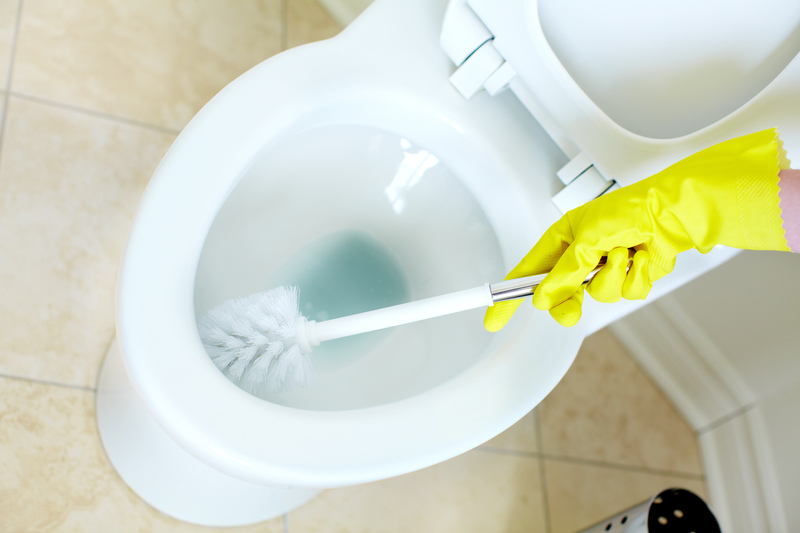The Critical Role of Air Quality in Homes and Workplaces
Posted on 27/09/2025
The Critical Role of Air Quality in Homes and Workplaces
Air quality is a fundamental aspect of our daily lives, greatly influencing our health, productivity, and overall well-being. While we often think of air pollution as an outdoor issue, the air inside our homes and workplaces can be just as critical--if not more so--to our long-term wellness. In this comprehensive article, we will explore the importance of air quality indoors, common pollutants, the impact on health and productivity, and practical steps you can take to ensure you are breathing clean air both at home and at work.
Understanding Indoor Air Quality
Indoor air quality, often referred to as IAQ, describes the condition of air within and around buildings and structures, especially as it relates to the health and comfort of occupants. With the average person spending over 90% of their time indoors, the condition of the air in these environments is vital. Poor indoor air can be caused by a combination of pollutants, inadequate ventilation, and external factors such as nearby industrial activity or heavy traffic.
Why is Good Air Quality Important in Homes and Offices?
- Health Protection: Clean air helps prevent respiratory problems, allergies, and other chronic health issues.
- Workplace Productivity: Studies show workers in well-ventilated, clean-aired environments are more focused and efficient.
- Comfort and Well-being: High-quality air reduces sick days, headaches, fatigue, and eye/nose irritation.
- Equipment Longevity: Dust and poor air can even affect electronics and office machinery, leading to more frequent repairs.

Main Pollutants Affecting Air Quality Indoors
A host of pollutants can compromise the quality of air inside our homes and workplaces. The most common include:
- Particulate Matter (PM): Fine dust, dirt, pollen, smoke, and liquid droplets suspended in the air.
- Volatile Organic Compounds (VOCs): Chemicals emitted from paints, cleaning products, adhesives, and more.
- Biological Contaminants: Mold, bacteria, viruses, pet dander, and pollen.
- Carbon Monoxide (CO): An odorless, colorless gas that can be lethal at high concentrations.
- Radon: A naturally occurring radioactive gas that can concentrate indoors and is linked to lung cancer.
- Asbestos and Lead: Old building materials can release these into the air if disturbed.
How Do These Pollutants Enter Our Spaces?
Pollutants can come from various sources: cooking, smoking, household cleaning agents, unvented or malfunctioning gas appliances, central heating, pets, and even outdoor sources like traffic and industrial pollution that infiltrate our homes and offices. Insufficient ventilation or poorly managed HVAC systems can allow these contaminants to accumulate to harmful levels.
Health Impacts of Poor Air Quality
The effects of subpar air quality in our living and working spaces should not be underestimated. Let's explore the health risks associated with long-term exposure to polluted indoor air:
Short-Term and Long-Term Health Effects
- Short-Term: Irritation of the eyes, nose, and throat; headaches; dizziness; and fatigue.
- Long-Term: Chronic respiratory diseases, heart disease, damage to the liver, kidney, or central nervous system, and even cancer in severe cases.
Children, the elderly, and individuals with pre-existing health conditions are especially vulnerable to indoor air pollution. Allergies and asthma attacks are often exacerbated by exposure to dust mites, mold spores, pet dander, and chemicals in enclosed environments.
Impact on Cognitive Performance and Productivity
Numerous studies have shown that indoor air quality in offices and workplaces directly affects employee performance and absenteeism. High levels of CO2, for instance, have been linked to lower decision-making abilities and decreased concentration. Cleaner air leads to fewer sick days, higher morale, and an increase in overall productivity.
How to Assess Air Quality in Your Home or Workplace
Regularly monitoring indoor air quality is the first step to improvement. Here's how you can start:
- Conduct Visual Inspections: Look for visible mold, moisture damage, or dust build-up.
- Check for Odors: Unusual smells may indicate the presence of chemicals, mold, or poor ventilation.
- Use Air Quality Monitors: These devices detect levels of pollutants like CO2, VOCs, and particulates.
- Professional Assessment: Consider hiring certified professionals to test for radon or more difficult-to-detect contaminants.
It's advisable to schedule regular professional inspections if you live in an area prone to radon or suspect issues such as asbestos, especially in older homes and buildings.
Improving Air Quality: Practical Tips
While total elimination of contaminants may not be possible, there are several effective ways to improve indoor air quality at home and in the workplace:
Enhance Ventilation
- Open Windows: Whenever weather allows, air out rooms to dilute and remove indoor pollutants.
- Use Exhaust Fans: Especially in kitchens and bathrooms to remove moisture and contaminants directly at the source.
- Maintain Mechanical Ventilation: Ensure HVAC systems are properly serviced, and filters are regularly changed.
Control Sources of Pollution
- Avoid Smoking Indoors: Cigarette smoke contains numerous harmful chemicals.
- Store Chemicals Properly: Keep paints, solvents, and cleaning products sealed and in ventilated areas.
- Choose Low-VOC Products: Opt for paints, finishes, and furniture labeled "low VOC" or "no VOC".
Manage Humidity
- Use Dehumidifiers in damp areas to prevent mold growth.
- Fix Leaks Promptly to avoid moisture accumulation.
- Vent Dryers Outside to remove moisture-laden air efficiently.
Regular Cleaning
- Vacuum with HEPA Filters to trap fine dust and allergens.
- Clean Floors and Surfaces regularly with non-toxic cleaners.
- Reduce Clutter for fewer places where dust can accumulate.
Utilize Air Purifiers
Quality air purifiers with HEPA filters can capture particulate matter and some allergens. Devices equipped with activated carbon filters also help remove odors and VOCs. Air cleaning is particularly valuable in areas with poor external air quality or where windows cannot be frequently opened.
- Place Purifiers Strategically: Near high-traffic areas or where pollution sources are located (e.g., printers, kitchens).
- Ensure the Device is Appropriately Sized: Check the Clean Air Delivery Rate (CADR) for your room size.
The Role of Plants in Air Quality
Indoor plants have gained popularity as natural air purifiers. Certain species, such as the spider plant, peace lily, and snake plant, not only beautify spaces but also help remove toxins like formaldehyde and benzene from the air. However, while they contribute marginally to improved air quality, they should not replace adequate ventilation or effective filtration systems.
Legal Guidelines and Workplace Compliance
There are regulations and guidelines designed to protect workers from poor office air quality. The Occupational Safety and Health Administration (OSHA) in the US and similar bodies worldwide prescribe standards for indoor pollutants. Employers must ensure:
- Proper ventilation and air circulation
- Immediate attention to reports of poor air quality
- Prompt remediation of water leaks and mold
- Use of certified air purification systems where needed
Failure to comply can result in fines, lawsuits, or high employee turnover rates due to health-related absenteeism.
Employee Rights and Resources
- Report air quality concerns to building management or occupational safety representatives.
- Request professional inspections if health symptoms persist or if there is visible mold or suspicious odors.
- Participate in workplace wellness programs focused on creating a healthy office environment.

How Technology Is Advancing Indoor Air Quality Management
Technological innovations are transforming how we monitor and maintain quality air in our homes and workplaces. Smart sensors can now track real-time air parameters and alert occupants to potential dangers. Linked HVAC systems automatically adjust ventilation rates and filtration based on air quality readings.
Modern building designs also integrate air purification technologies directly, using advanced filtration, UV-C light disinfection, and humidity control to create healthier environments. As awareness of the importance of clean air indoors grows, we can expect further innovations to make indoor spaces safer and more comfortable.
Conclusion: Making Air Quality a Priority
The critical role that air quality plays in homes and workplaces cannot be overstated. From protecting health and enhancing productivity to complying with safety regulations, ensuring clean air indoors is a shared responsibility. By understanding the sources and risks associated with poor indoor air, adopting practical solutions, and staying informed about technological advances, you can create a safer, healthier, and more comfortable environment for yourself and those around you.
Remember, the air you breathe indoors is in your hands--take action today to ensure it is the best quality possible.
Key Takeaways
- Indoor air quality directly impacts health, comfort, and productivity.
- Common indoor pollutants include particulates, VOCs, biological contaminants, and dangerous gases like radon and carbon monoxide.
- Regular assessment and maintenance of ventilation, humidity, and cleanliness significantly enhances indoor air.
- Modern technology and air purification systems make monitoring and improving air quality easier than ever.
- Everyone has a role in maintaining healthy air, whether at home or at work.
For a healthier life and improved productivity, start valuing and optimizing the quality of the air you breathe indoors.




